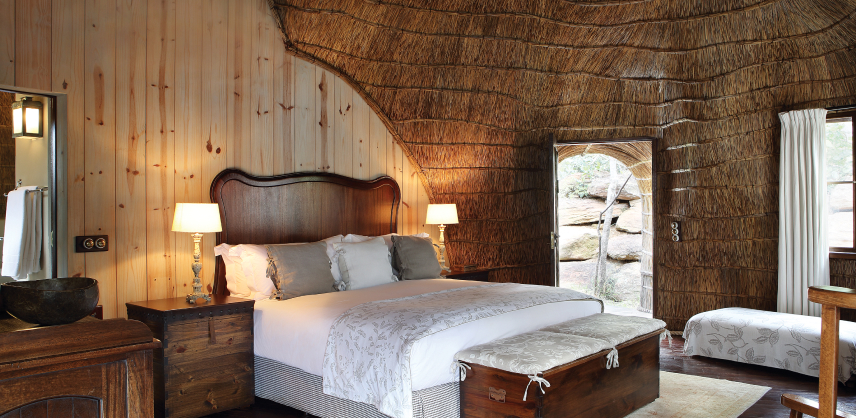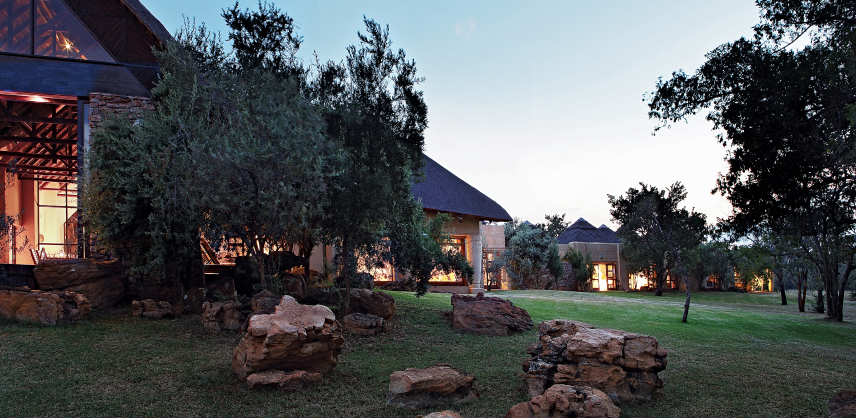Book directly with ease.
It’s easy to rush through Limpopo when en route to one of its well-known parks or neighbouring countries – namely, Kruger National Park on its eastern edge, or Zimbabwe to the north. Here at Shambala, we believe the province truly outshines any other region in South Africa. Named after a river, and meaning ‘strong gushing waterfalls’ in the Northern Sotho language, the Limpopo Province offers a mosaic of exotic wildlife, spectacular scenery and contrasting terrains - all steeped in myth and legend. Here, we share our insight into why Limpopo truly is one of the unspoilt corners of Africa.
CLIMATE
With almost year-round sunshine, both the summer and winter seasons provide a unique safari experience. The summer months of October to April are the wet season. Warm temperatures and bursts of rain transform the bush from dry and sparse to thick and lush. Temperatures are known to reach up to 30 degrees but dramatic afternoon showers pleasantly cool the air. In the winter months of June, July and August, sunshine is still plentiful while the air turns cooler and drier, delivering excellent conditions for safari. With more hours of daylight combined with sparser undergrowth, wildlife becomes more visible to the eye. And when the sun sets, clear winter nights are superb for star gazing.WILDLIFE
The five regions of Limpopo Province offer very varied landscapes. Terrains encompass everything from natural bushveld, mountain ranges and savannah plains, to ancient forests, waterfalls and natural hot springs. The scenic malaria-free Waterberg region, wild and untamed in parts, remains to be fully discovered by tourists and is a wildlife haven. Every season, each day offers up different wildlife experiences in the Limpopo Province. As well as The Big 5, the province is home to countless mammals, birds, reptiles and amphibians. Cheetahs, hyenas, baboons, warthogs, black eagles, hippos and crocodiles are some of the most eye-catching, to name but a few. For avid bird-watchers, the Nylsvley floodplain holds great importance for waterfowl in South Africa, while the Waterberg Mountains are home to a host of species, notably the White-backed Night Heron and African Finfoot. With sustainable tourism on the rise, this region aims to safeguard its flora and fauna and is hailed as one of the best-managed conservation areas in the country.CULTURE & HISTORY
The Limpopo province is a land of legend, home to an abundance of South Africa’s archaeological sites. Well-preserved for centuries, these sites offer a glimpse of raw, untamed Africa. Almost 254 known cultural heritage sites are tucked away in this province, dotted amidst the savannahs, ancient forests, hot mineral springs and cascading waterfalls. There are nearly 130 recorded ancient rock art sites here, and to this day secrets of the past are still being unearthed. Visitors can embark on a journey of discovery along the 350-kilometre self-drive route of the Waterberg Meander. Leading you through the heart of The Waterberg biosphere, this Eden is graced by soaring mountain peaks, geological and archaeological wonders and nature reserves. A basin of magnificent biodiversity, the Makapansgat Valley displays some of the most astounding beauty in Limpopo. Of particular importance and rarity, The Makapan Caves hold fossils that date back 3.3million years, directly to the Cradle of Humankind and our understanding of human evolution. An awe-inspiring experience, much like the Limpopo Province itself, these wonders really do transcend words.Inspired? Shambala Private Game Reserve covers almost 10,000 hectares under the watchful guardianship of the picturesque, malaria-free Waterberg mountains in the Limpopo Province. Pure luxury set amidst unrivalled nature, our staff and guides are here to ensure your safari experience in South Africa is uniquely tailored to you, for memories that will be cherished for a lifetime.



